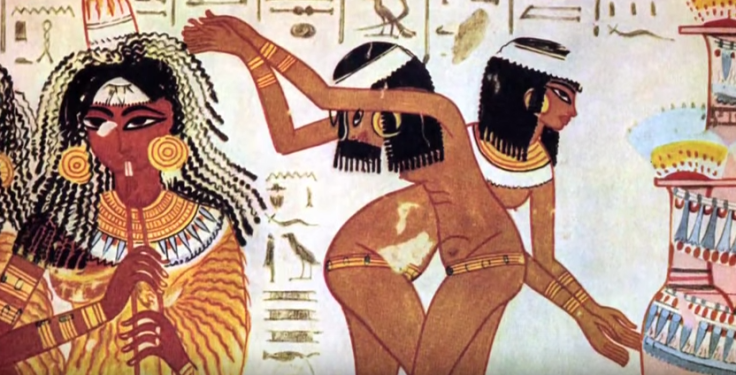Female Viagra: Sparrow brains and baboon urine were ancient remedies

The pink pill known as "female Viagra" is set to become available in the US with a doctor's prescription on 17 October. Flibanserin, a drug produced by Sprout Pharmaceuticals and marketed as Addyi, recently passed an FDA (Food and Drug Administration) advisory committee meeting.
However, the FDA had rejected the drug, made by Sprout Pharmaceuticals Inc, in 2010 and 2013 before approving it in August. It was turned down by the FDA for lack of effectiveness and side effects such as nausea, dizziness and fainting. Sprout said trials had shown an increase "in the number of satisfying sexual events", although experts suggest the test results were modest.
Addyi is the first approved drug to address the issue of low sexual desire rather than the physical mechanics of sexual dysfunction, with the FDA saying the drug's purpose was the "treatment of hypoactive sexual desire disorder (HSDD)".
Cindy Whitehead, Sprout's CEO said: "Women are pretty clear they're not on-demand creatures. The media loves to call this female Viagra, but that's the point at which we start the real conversation on how this is different for women. Desire is a state. This goes back to making sure those brain chemicals are aligned in a way that allows desire to take hold."
A history of aphrodisiacs
The idea of enhancing female sexual arousal is centuries-old. The mandrake was believed to be a love-charm in ancient Egypt. In The Mandrake And The Ancient World, Harrison wrote that it released a "piercing demoniacal shriek which was supposed by the ancients to accompany the uprooting of the plant". Mandrake root was eaten as an aphrodisiac and as a cure for female infertility because the forked root was supposed to resemble a woman's thighs.
The blue lotus was called Viagra of the pharaohs and used to enhance the sex drive. Egyptian medicinal practitioners also used this flower to stimulate blood flow, and as an anti-ageing treatment. The ancients worshipped blue lotus as a visionary plant and it was the symbol for the origins of life. The flower was soaked in water or wine, and then ingested, acting as an intoxicant.
Nymphaea Caerulea (blue lotus or sacred blue lily of the Nile) was the most sacred plant in ancient Egypt, worshipped as a visionary plant and was a symbol for the origins of life. It was often depicted on the walls of pharaohs' tombs, often shown in social or sexual scenes.
Before the word "Viagra" came into modern-day parlance, skink flesh and sparrow brains were once considered aphrodisiacs thousands of years ago. Many recipes were based on the theories of the Roman physician Galen, who wrote that foods worked as aphrodisiacs if they were "warm and moist".
Vicki León says in The Joy Of Sexus: "When it came to intimacy readiness, Greek and Roman lovers were perennially inventive. They set store by a wide spectrum of aphrodisiacs, some still in hopeful use today, including raw oysters, the fleshy symbol of the goddess Aphrodite."
In other parts of the world, such as Africa, yohimbe was revered. Derived from the bark of an evergreen tree native to Gabon, Cameroon and the Democratic Republic of Congo, it has stimulant properties that are believed to increase the production of norepinephrine and adrenaline in the body, heightening sexual performance.
Boosting the sex drive through the ages
- 3150BC: In ancient Egypt wine-soaked lilies were said to enhance sexual performance
- 27BC: The Amazons were reported to have broken the right leg or arm of their captives, believing that wounded men performed better sexually
- 7th century: Saffron was used by the Assyrians as a spice for lust
- 15th century: Henry IV was said to consume Spanish Fly, a beetle whose poison inflamed the genitals
- 20th century: Baboon urine drunk with beer is said to increase sexual desire
© Copyright IBTimes 2025. All rights reserved.





















